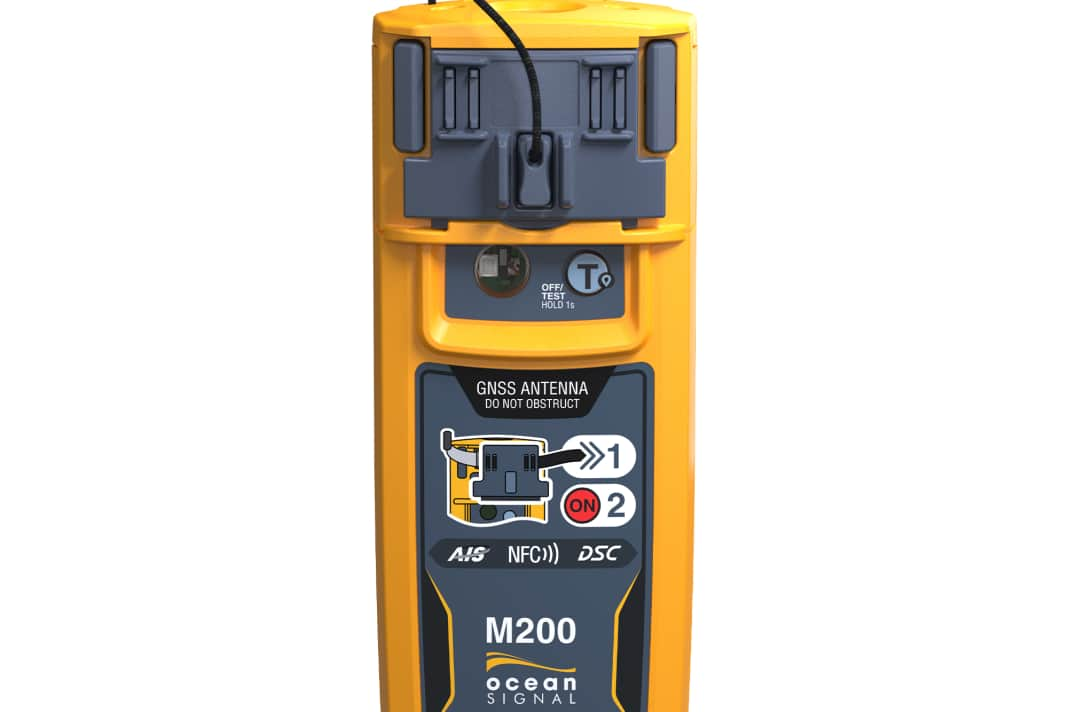


Triple emergency communication
The SafeSea M200 relies on a multi-stage alarm concept. In an emergency, the device sends signals via three different systems: AIS (Automatic Identification System), DSC (Digital Selective Calling) and the international emergency frequency 121.5 MHz. This combination maximises the chance of rapid localisation and rescue. Once activated, the M200 starts transmitting the first individual distress call within 15 seconds. Eight AIS messages are sent per minute, which also contain the exact coordinates of the casualty once the GNSS position has been determined.
Compact design with additional functions
With a design that is 20 per cent smaller than comparable devices, the Safesea M200 can be easily integrated into lifejackets. Despite its compact dimensions, it has additional features such as an integrated DSC receiver. This stops the transmission of DSC messages as soon as the emergency call has been acknowledged. Two infrared white strobe lights are installed for better visibility. The infrared component is intended to ensure that the AIS-MOB can be easily located by thermal imaging cameras. Ocean Signal states that the battery life is five years, and the transmitter should work for at least twelve hours in an emergency.
Simple integration and operation
The SafeSea M200 can be activated both manually and automatically. For integration into inflatable lifejackets, Ocean Signal supplies a clip for attachment to the inflation hose and an activation strap that is placed around the air chamber. When the waistcoat is inflated, the antenna is automatically extended and the emergency transmitter is activated. Thanks to Near Field Communication (NFC), users can hold their smartphone close to the device to configure the Ocean Signal app, enter data such as the vessel's MMSI number and call up information on the battery status and self-tests. The SafeSea M200 AIS-MOB is expected to cost around 645 euros.
Technical specifications
General:
- Conformity to standards: Class M (ECC/DEC/(22)02)
- Battery life: 5 years
- Operating time in an emergency: At least 12 hours
- Guarantee: 2 years
- Price: approx. 645 Euro
Send functions:
- AIS: 8 messages per minute
- DSC: Integrated transmitter and receiver
- Tracker: 121.5 MHz
- GNSS: GPS and Galileo
Additional functions:
- Strobe light: Infrared and white
- NFC: For smartphone pairing
- App support: iOS and Android
